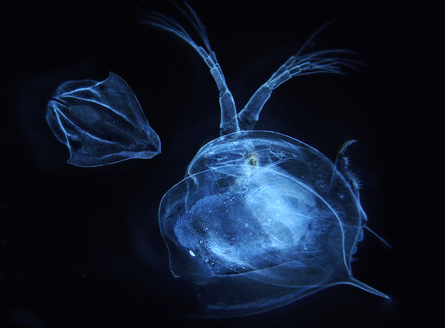Getting naked may help to protect a species of tiny water flea. When Daphnia magna molts, its discarded body armor can carry away harmful bacteria, a new study finds.

The work is the first time molting has been shown to safeguard against parasites, says evolutionary biologist David Duneau of Cornell University.
“The common view of molting is that it’s a weakness for these types of animals,” says Duneau, coauthor of a study published online April 11 in Proceedings of the Royal Society B.
Duneau coated the carapaces of water fleas with spores of Pasteuria ramosa, a species of parasitic bacteria that can infect its host in half a day and ultimately castrates its victims. D. magna that sloughed off their cuticles before the bacteria had much of a chance to penetrate were far less likely to be infected than comrades that retained their outer coverings.
Molting may defend larger creatures as well, Duneau speculates — including snakes carrying Lyme disease-infected ticks.






